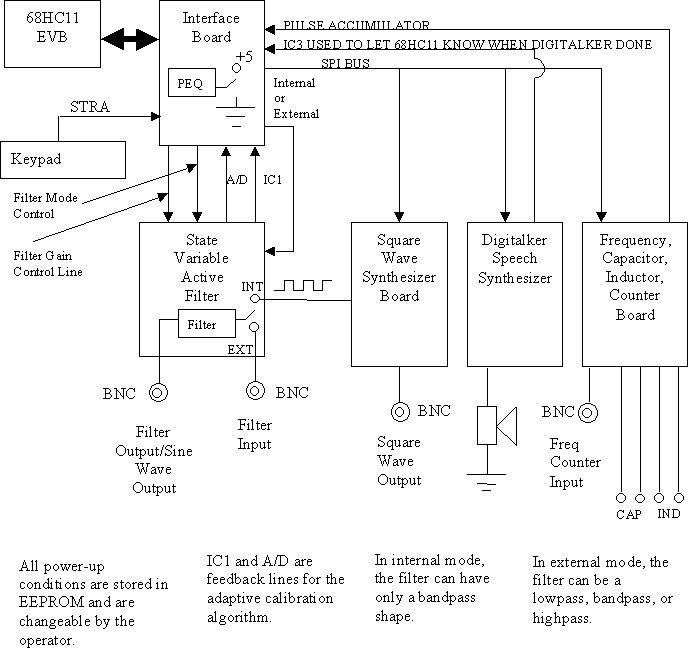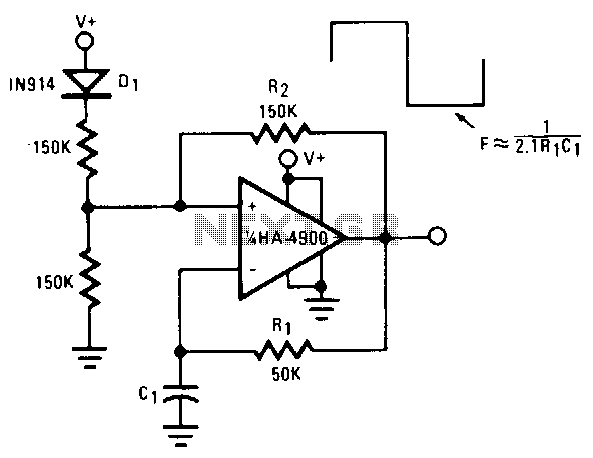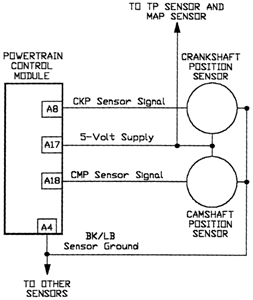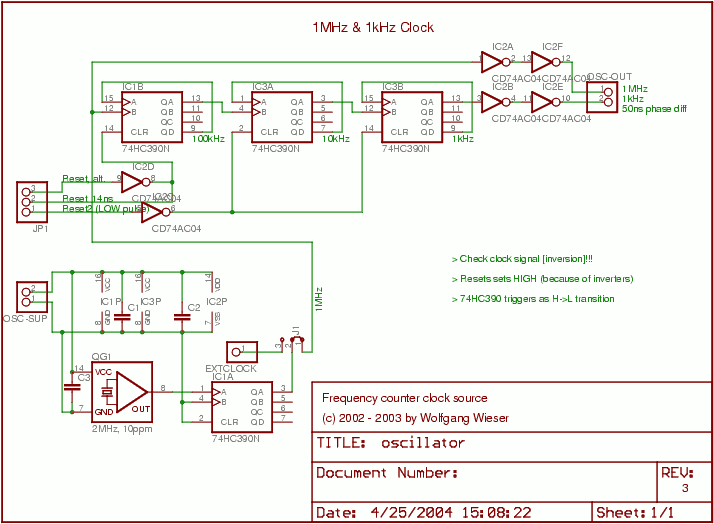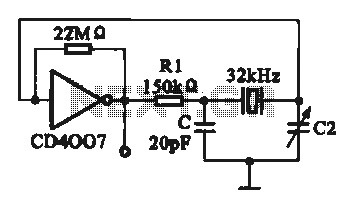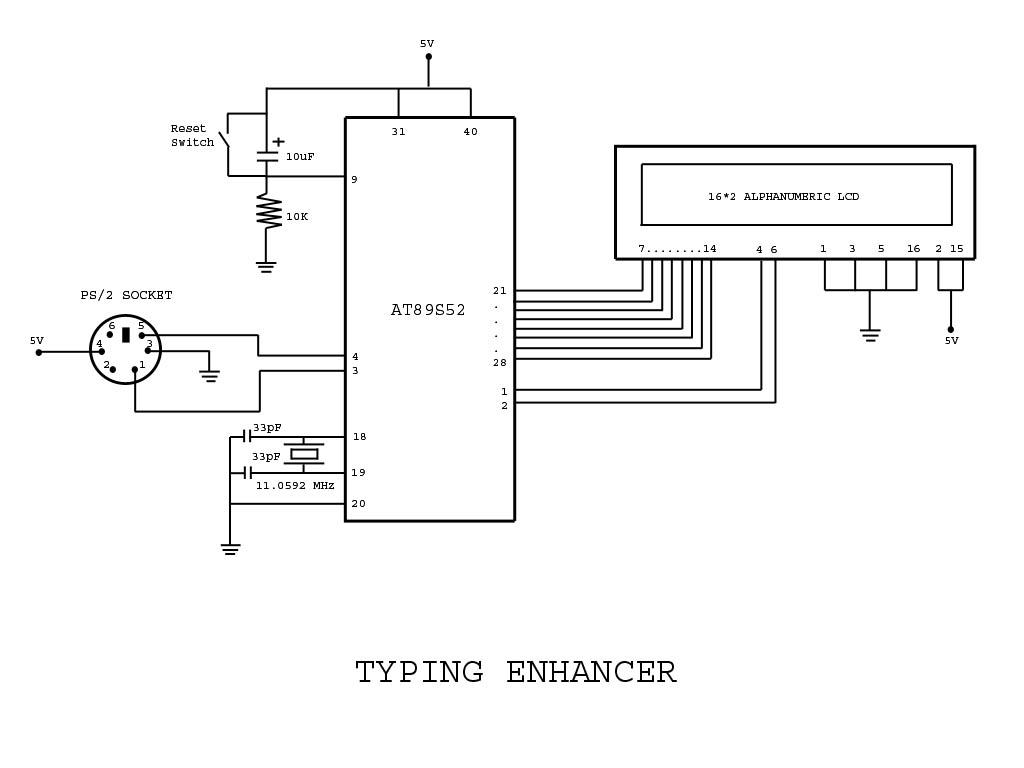
QRP SIDETONE GENERATOR CODE PRACTICE OSCILLATOR
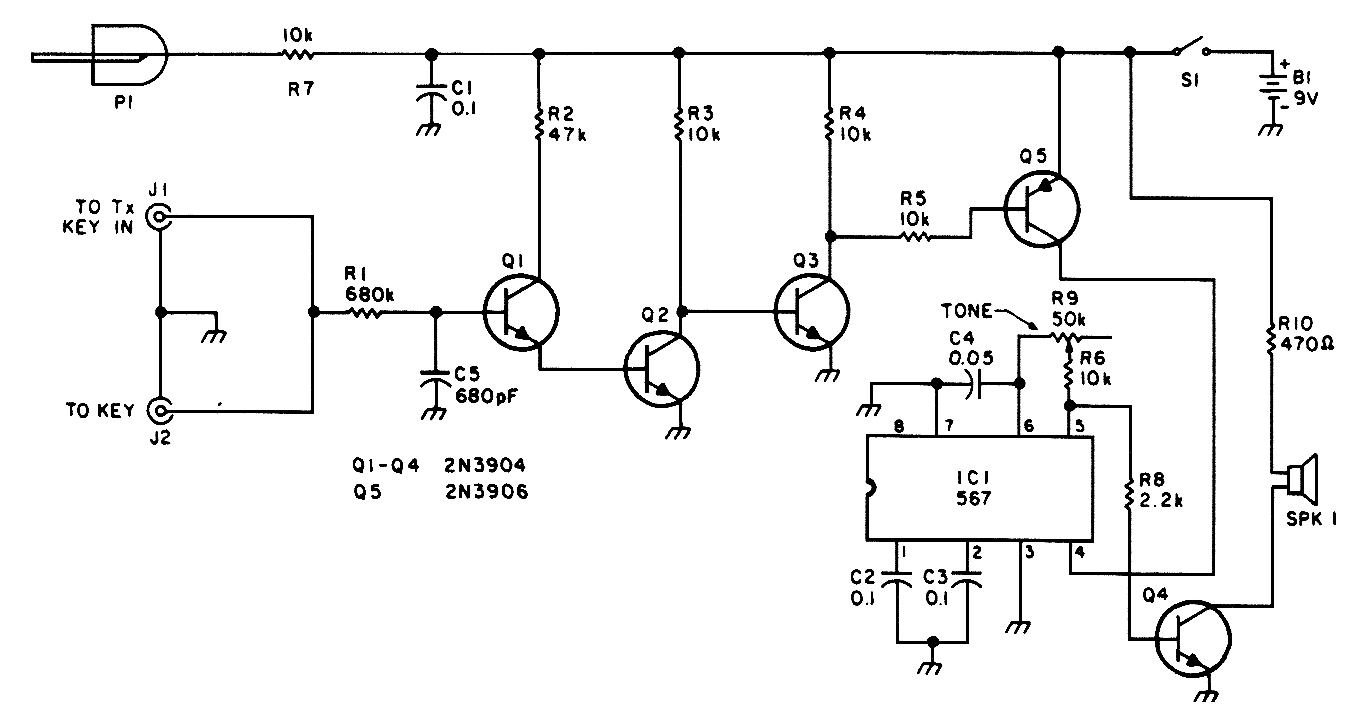
This circuit is designed for low-power transmitters that operate with a positive keying voltage. The transistors Q1, Q2, and Q3 are configured as a switching amplifier. When the key is pressed, the collector of Q3 connects to ground, which activates Q5 and subsequently powers IC1, an audio oscillator. Q4 is responsible for driving the speaker. To utilize this circuit as a code practice oscillator, connect P1 and J1, and insert a key into J2.
The circuit functions effectively as a low-power transmitter system, utilizing a series of transistors to create a robust switching mechanism. The keying voltage serves as the control signal, allowing for efficient operation of the audio oscillator. The configuration of Q1, Q2, and Q3 as a switching amplifier ensures that the signal is amplified adequately to drive subsequent components without significant loss of power or signal integrity.
When the key is pressed, Q3's collector transitioning to ground initiates a series of events. The activation of Q5 enables the circuit to supply power to IC1, which operates as an audio oscillator generating sound waves at a specific frequency. This frequency can be adjusted depending on the requirements of the application, making the circuit versatile for various audio signaling tasks.
Q4 plays a crucial role in the system by driving the speaker, converting the electrical oscillations produced by IC1 into audible sound. The output from the speaker can be used for various applications, including signaling or alerting users to specific conditions.
For those seeking to use the circuit as a code practice oscillator, the addition of components P1 and J1 allows for enhanced functionality, while J2 serves as the input for the key. This setup is particularly useful for training purposes, enabling users to practice Morse code or other signaling methods in a controlled environment. The overall design emphasizes simplicity and efficiency, making it suitable for hobbyists and professionals working with low-power transmitter applications.For use with low-power transmitters with a positive keying voltage. Q1/Q2/Q3 form a switching amplifier. When the key is pressed, the collector of Q3 goes to ground, tuming on Q5 and activating IC1, an audio oscillator. Q4 drives the speaker. For use as a code practice oscillator, insert P1 and J1 and a key in J2. 🔗 External reference
The circuit functions effectively as a low-power transmitter system, utilizing a series of transistors to create a robust switching mechanism. The keying voltage serves as the control signal, allowing for efficient operation of the audio oscillator. The configuration of Q1, Q2, and Q3 as a switching amplifier ensures that the signal is amplified adequately to drive subsequent components without significant loss of power or signal integrity.
When the key is pressed, Q3's collector transitioning to ground initiates a series of events. The activation of Q5 enables the circuit to supply power to IC1, which operates as an audio oscillator generating sound waves at a specific frequency. This frequency can be adjusted depending on the requirements of the application, making the circuit versatile for various audio signaling tasks.
Q4 plays a crucial role in the system by driving the speaker, converting the electrical oscillations produced by IC1 into audible sound. The output from the speaker can be used for various applications, including signaling or alerting users to specific conditions.
For those seeking to use the circuit as a code practice oscillator, the addition of components P1 and J1 allows for enhanced functionality, while J2 serves as the input for the key. This setup is particularly useful for training purposes, enabling users to practice Morse code or other signaling methods in a controlled environment. The overall design emphasizes simplicity and efficiency, making it suitable for hobbyists and professionals working with low-power transmitter applications.For use with low-power transmitters with a positive keying voltage. Q1/Q2/Q3 form a switching amplifier. When the key is pressed, the collector of Q3 goes to ground, tuming on Q5 and activating IC1, an audio oscillator. Q4 drives the speaker. For use as a code practice oscillator, insert P1 and J1 and a key in J2. 🔗 External reference
